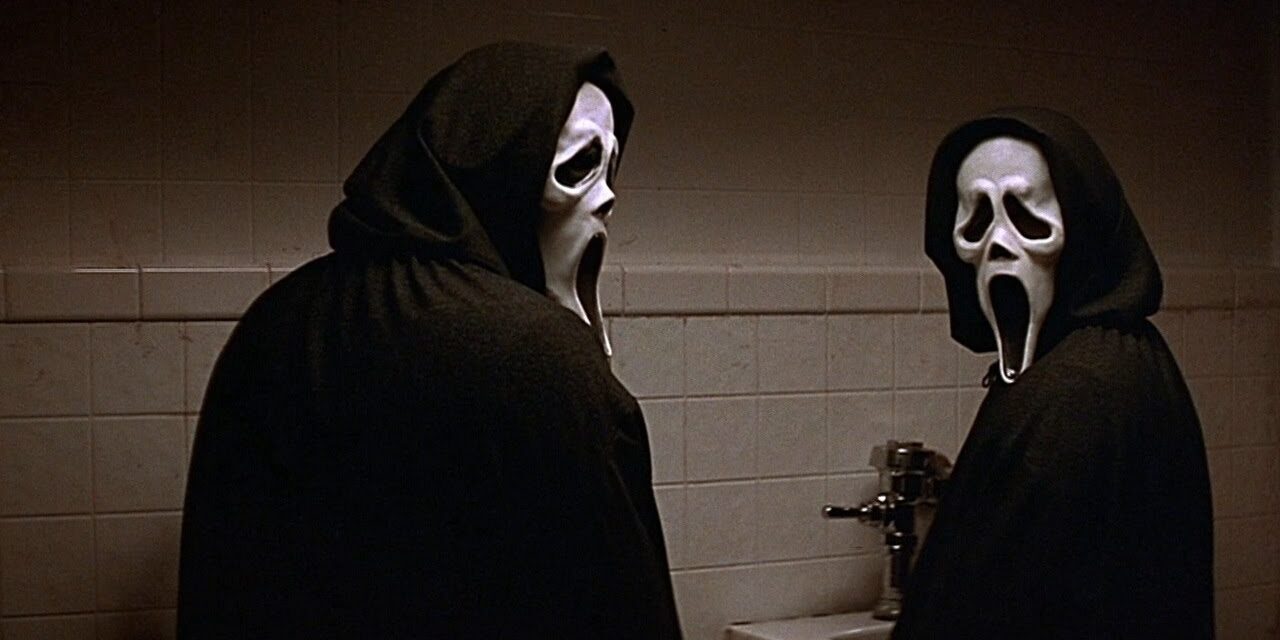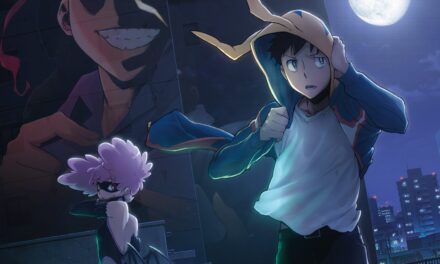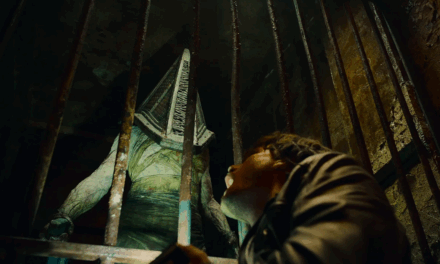It’s spooky season, and with what some call one of the best times of the year comes the arrival of Black Phone 2, the sequel to the $161.4 million global 2021 critical and box office hit that introduced audiences to The Grabber (Ethan Hawke). Scott Derrickson returns to direct the sequel, with his frequent collaborator C. Robert Cargill helping him co-write the film’s screenplay. Reviews for Black Phone 2 have been solid so far, with some reviewers saying it’s even better than the original, which sparked a thought to look back at other horror movie sequels that are either better or just as good as their predecessors.
This list of the ten best horror movie sequels ever hopefully shows that sometimes a return to something familiar can be just as spooky the second time around. Hell, in some cases, it’s even more than the second time around.
Honorable Mention: Friday the 13th: The Final Chapter
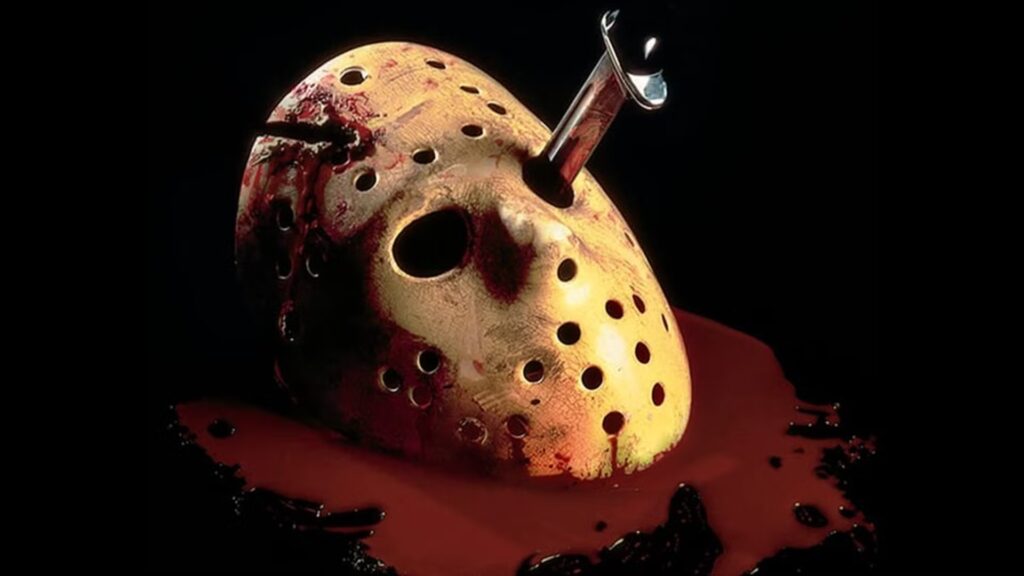
When it comes to the Friday the 13th franchise, choosing which one of the sequels is “the best” comes down to personal preference. Some might pick the second movie because of Amy Steel’s fierce arrival as Ginny Field, or they’ll say that the sixth film, Jason Lives, is their jam because of its wicked sense of humor and for going a bit meta before meta was really a thing. 1984’s Friday the 13th: The Final Chapter for this list came down to the movie representing some of the best of what the franchise had to offer up to that point.
As the title suggests, this was meant to be the last entry of the series, but cheap budgets and durable box office prompted a return of Jason Voorhees just a year later. Not knowing that would be the case, director Joseph Zito, working from a screenplay by Barney Cohen and a story by Bruce Hidemi Sakow, went all out with The Final Chapter by going all out with its brutality and chills while giving the audience some of the best cast of characters the franchise has ever seen.
The movie picks up immediately after Friday the 13th Part III follows Jason Voorhees (portrayed by the late Ted White in this film) after he escapes a morgue and returns to his stomping grounds to engage in yet another killing spree. What he stumbles upon is the Jarvis Family and a group of nubile young adults partying across the way, which will serve to add to Jason’s already high body count. There are a lot of characters to spread out across the 91-minute runtime, but the film makes the most of utilizing them, with Trish Jarvis (Kimberly Beck) and Tommy Jarvis (Corey Feldman) giving the film a solid foundation and formidable protagonists to face off against Jason in the end.
The young adults doing all the wrong things across the way also prove to be fun, with Crispin Glover’s Jimmy Mortimer and Lawrence Monoson’s Ted Cooper getting the most laughs with some of the franchise’s more memorable dialogue exchanges. The film features standout kills and amazing make-up effects from Tom Savini, who returns to the franchise to “kill” the monster he helped create in Friday the 13th. Jason Voorhees did come back for more, but if things had ended here, fans would’ve found themselves completely satisfied.
10. Hellbound: Hellraiser II (1988)
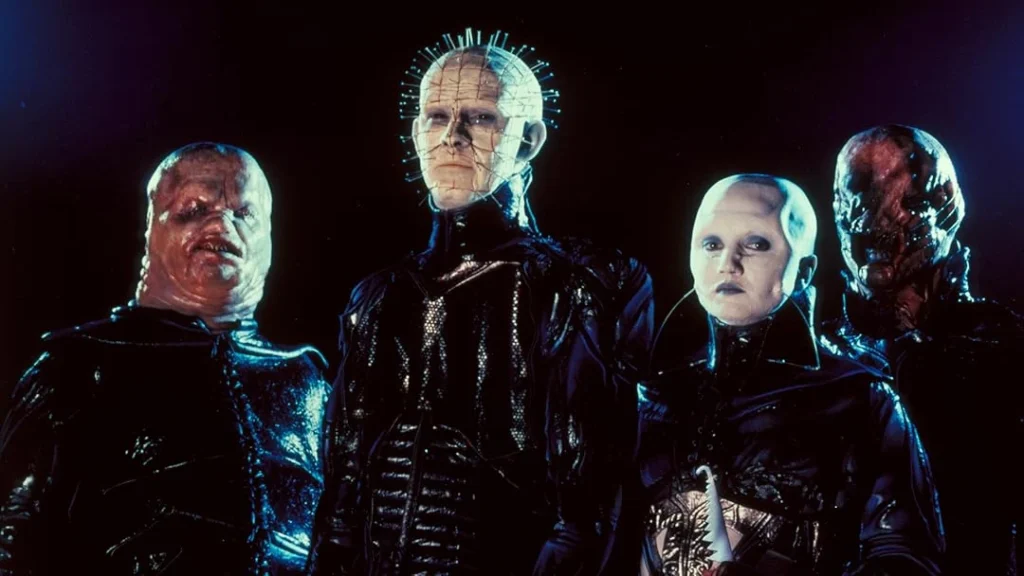
In the spirit of complete honesty, even though the Hellraiser franchise has spanned a considerable amount of years, the only sequel to the 1987 original that comes close to standing proudly alongside it is 1988’s Hellhound: Hellraiser II. Directed by Tony Randel from a screenplay by Peter Atkins and a story by Clive Barker, Hellbound closely follows the events of the first movie and centers on Kirsty Cotton (Ashley Laurence), who has been admitted to a psychiatric facility following the events of the first movie. She becomes the interest of the hospital’s head doctor, Dr. Phillip Channard (Kenneth Cranham) who is obessed with the Lament Configuration and the secrets and power that it might possess.
It all culminates with the return of Julia Cotton (Clare Higgins) from a bloddy mattress, a mute patient named Tiffany (Imogen Boorman) with an affinity for puzzles and more backstory about the sadomasochistic Cenobites led by Pinhead (Doug Bradley). Hellbound: Hellraiser II might lack some of the sophistication and adult melodrama that made its predecessor far more than a blood-drenched gorefest but it’s a haunting spectical of out of this world visuals and an interesting expansion of the lore presented in the 1987 film.
Getting to step inside The Lament Configuration proves to an inspired move and even though it would usually dilute a film’s central villains by giving them more backstory, learning a bit more about the Cenobites works in the sequel’s favor. It shows that even the gatekeepers of this hell dimension were once human and makes them a bit more nuanced than standard horror movie villains. The sequels became sillier and cheaper in their execution after this but Hellbound: Hellraiser II makes for a solid double feature with the first movie.
9. Halloween II (1981)
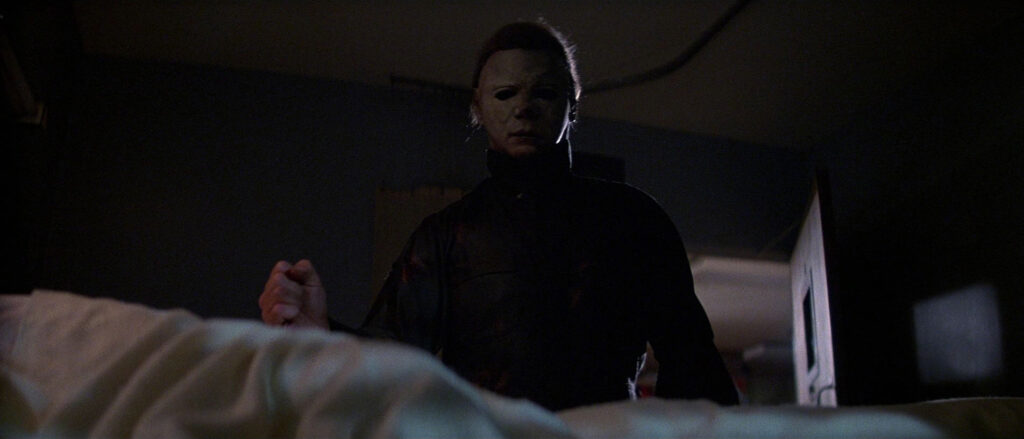
As a sequel to 1978’s Halloween, which continues to be a classic of the genre, Halloween II lacks in more than a few ways, but on its own merits, it’s still an effectively crafted slasher effort that at least comes close to matching the style of John Carpenter’s masterpiece. Directed by Rick Rosenthal from a screenplay by John Carpenter and Debra Hill, Halloween II takes place immediately after the cliffhanger ending of Halloween and follows Laurie Strode (Jamie Lee Curtis) after she’s taken to a local hospital following surviving being attacked by Michael Myers (now portrayed by Dick Warlock).
He’s now hot on her trail and his stalking around the dark corridors of the hospital in murderous pursuit of the one who got away, while Dr. Sam Loomis (Donald Pleasence) is also tracking him, unaware of a big secret which explains why Michael has made Laurie his primary target. Accepting that Halloween II would be more ’80s slasher rather than atmospheric suspense greatness is the first level of acceptance with the sequel.
The movie doesn’t make huge strides to come close to what Carpenter accomplished with Halloween, but it’s stylish in its own right, and because it takes place on the same night, it’s easy to see that serious attempts were made to maintain Carpenter’s style, something Rosenthal mostly accomplishes. Curtis, unfortunately, takes a bit of a backseat here since the film confines her mostly to a hospital bed until late in the film, but Pleasence proves to be a prestige presence as Loomis, getting more screentime this time around while establishing character traits that would become more evident in the future sequels he appeared in.
As Myers, Dick Warlock does have the effortless stride of Nick Castle, but something is haunting about his slower, yet deliberate movements. After Castle, he’s probably the best performer to don the mask. Much has been made about the film’s big reveal regarding Michael and Laurie, and it’s one that has been a source of debate for years. As a continuation of a story that a studio wanted to be told (for financial reasons), it works well enough as an explanation for the audience. In terms of what Carpenter wanted, it’s clear that this wasn’t a trajectory born from creativity (Carpenter has said it took a lot of beers to get here), but Halloween II is one of the better slasher movie sequels, even if the greatness it had to follow was near impossible to live up to.
8. Psycho II (1983)
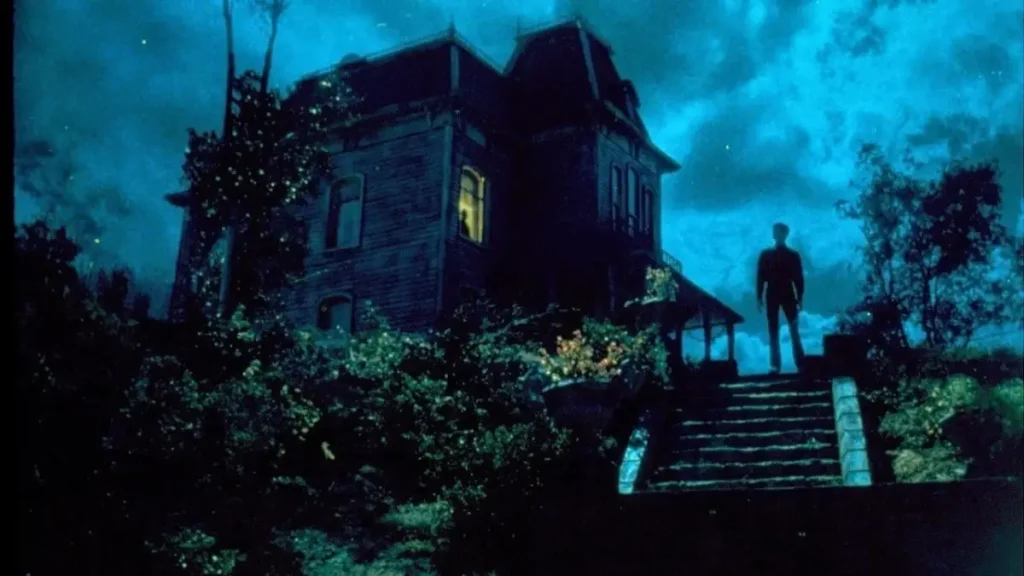
The notion of making a sequel to one of the most iconic films of all time had to be a daunting task, but director Richard Franklin did just that with 1983’s Psycho II, the sequel to Alfred Hitchcock’s masterpiece, Psycho. From a screenplay by Tom Holland, Psycho II is set 22 years after the events of the first movie and centers on Norman Bates (Anthony Perkins) after he’s released from a mental institution. He returns home to Bates Motel to try and lead a normal life, but his past comes back to haunt him when someone begins committing a series of murders that could be Norman doing it himself, as he seems to be losing grip on reality.
Psycho II works because it never attempts to be better than Psycho and decides to forge its own path as a psychological slasher film that keeps the audience on its toes with its various twists and turns. Perkins effortlessly steps back into the role of Norman Bates and presents a duality that adds to the film’s mystery. On the one hand, he’s a very sympathetic man just trying to rebuild his life, but on the other, he showcases a level of psychosis that may indicate he hasn’t changed much at all. He walks a fine line between the personas, which makes the movie’s ultimate twist and conclusion all the more satisfying. The movie is certainly gorier than its predecessor, and it gives into the ’80s slasher sensibilities of the time it was released, but it remains a surprisingly effective sequel that honestly gets better with each viewing.
7. The Devil’s Rejects (2005)
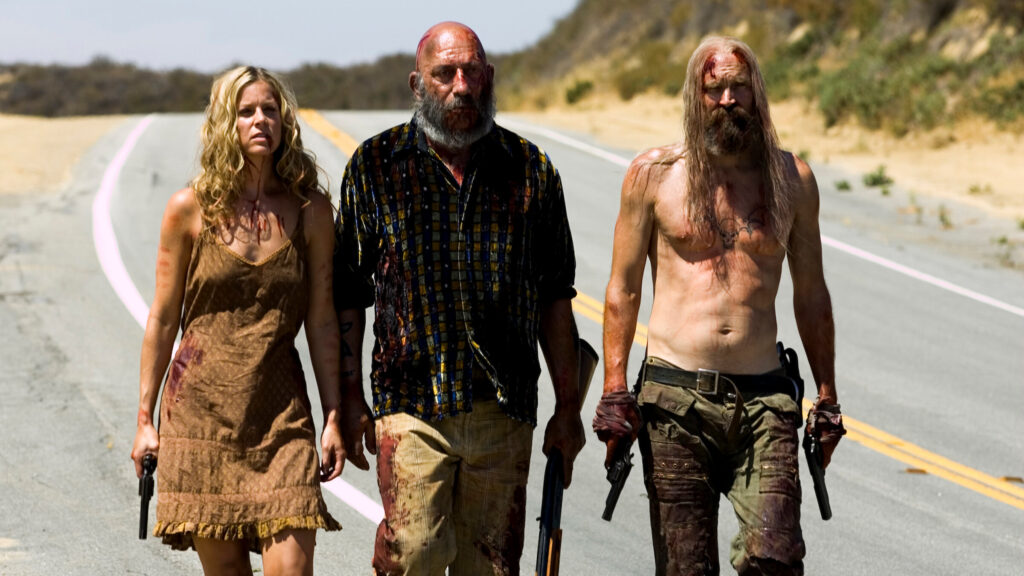
Typically, Rob Zombie isn’t my jam as a filmmaker (I completely vibe with his music though), but he hit all the right horrific notes with 2005’s The Devil’s Rejects, the sequel to 2003’s House of 1000 Corpses. Written by Zombie himself, The Devil’s Rejects follows three members of the psychopathic family introduced in the first movie who embark on a murderous rampage that could make the Manson family nervous. Zombie is at the height of his talents here, paying homage to horror classics of the past, while showcasing that with enough focus, he truly is a capable filmmaker with considerable talent.
The movie is violent and unrelenting while also offering up sinister dark humor that mostly comes courtesy of the film’s central villains, portrayed by the late Sig Haig (Captain Spaulding), Bill Moseley (Otis Driftwood), and Zombie’s wife, Sheri Moon Zombie (Vera-Ellen “Baby” Firefly). The movie received mixed critical reviews upon release (54 percent on Rotten Tomatoes), but it is widely considered to be Zombie’s best film because it represented a sharp improvement from its predecessor, and it was a surprisingly effective expansion of a crazy group of characters brought to life through inspired writing and performances that are one hundred percent committed in their execution. It’s the kind of movie that isn’t just good compared to Zombie’s other work, it’s a fun and gruesome horror film that works on its own merits while indicating a step forward for the director. Even if he didn’t completely live up to it with his subsequent films.
6. Halloween Kills (2021)
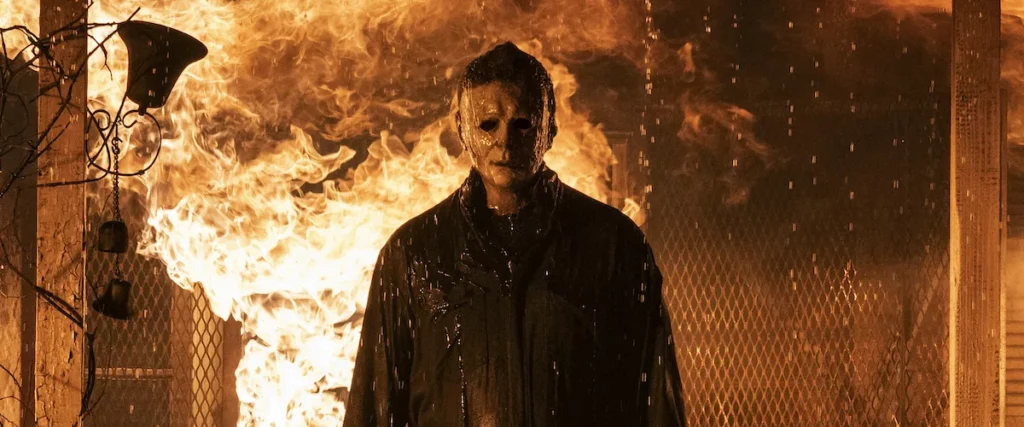
It might be controversial to include Halloween Kills on this list at all, but for this horror and Halloween fan, it’s a sequel I consider to be unfairly ridiculed and one I believe gets better with each viewing. Halloween Kills serves as a sequel to 2018’s Halloween, which is a direct sequel to 1978’s Halloween (believe me, every fan knows this franchise is like a choose-your-own-adventure series). Directed by David Gordon Green from a screenplay he co-wrote with Danny McBride and Scott Teems, Halloween Kills follows the route of 1981’s Halloween II by taking place on the same night where the previous film ended as the residents of Haddonfield become aware of Michael Myers’ (James Jude Courtney) presence and Laurie Strode (Jamie Lee Curtis) is sent to a local hospital to recover from her previous encounter with him.
Even though Halloween Kills has a feeling of being the middle chapter of a bigger story, I respect the film’s unwavering brutality (it is called Halloween Kills, btw) and Gordon Green’s style throughout, which turns Haddonfield into a truly bleak place haunted by a tragedy from the past that has re-emerged to enact more terror. The film starts with a creative bang by taking viewers back 40 years to see the aftermath of Michael being shot and falling from a balcony following his pursuit of Laurie Strode. It’s a wonderful sequence that is probably one of the best moments from any entry in the franchise to date.
The best thing the film does is put Michael front and center here as he stalks through the streets of Haddonfield in full-on rage mode. While the movie lacks a character-driven human element, it’s an exercise in seeing what happens when a monster is unleashed and will stop at nothing to spread his violence. Curtis is mostly sidelined here (similar to her hospital stay in Halloween II), but Judy Greer and Andi Matichak step things up as her daughter and granddaughter, respectively, which leads to a final ten minutes that resonate in a big way and leave an impact. Some have been harsh on the film, but it’s my firm belief that they got this one right.
5. Smile 2 (2024)
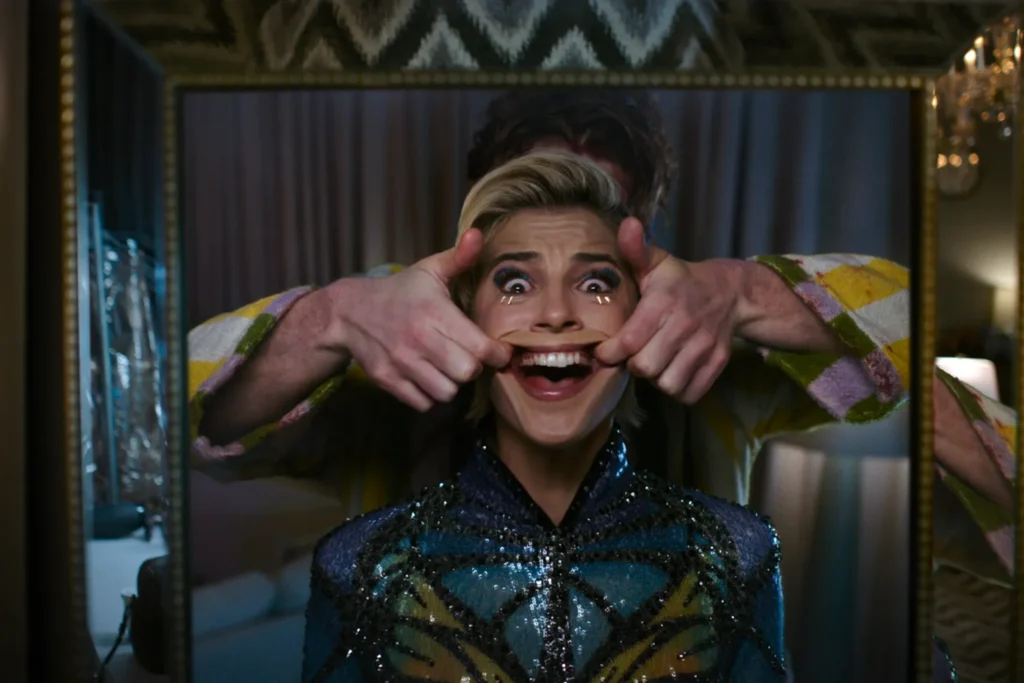
Smile was a pleasant surprise when it was released in 2022, but Smile 2 proved to be a revelation, building on the mythology of the first film while also being a top-notch exercise in supernatural psychological horror. Parker Finn returns to write and direct the sequel, which follows a pop star named Skye Riley (Naomi Scott) who begins to find herself experiencing disturbing situations as she’s about to embark on a big comeback tour. Smile became a big sleeper hit when it was released, but some believed that it succumbed to using too many jump scares rather than focusing on the supernatural elements that proved to be more terrifying. Smile 2 is a far more psychological experience, in large part because the film’s central character, Skye Riley, is a far more compelling lead.
Due to a troubled background, Skye’s mental state is called into question on more than one occasion, which makes the disturbing events she begins encountering questionable to those around her. The audience knows there is more to do this but it makes for an interesting alternative. Is Skye crazy? Is she getting back into old, damaging habits? Could she actually be telling the truth about what she’s seeing? Making these questions compelling is a truly committed and electric performance from Scott, who embodies all aspects of Skye to make her one of the more interesting leads in a horror film in quite some time. The scares are better, and there is some pretty smart commentary about the perils of pop stardom, drug addiction, and the outside forces that want someone to be famous, at all costs. It’s a very smart film on all fronts and a prime example of how to make a sequel evolve out of the ideas presented in its predecessor.
4. Wes Craven’s New Nightmare (1994)
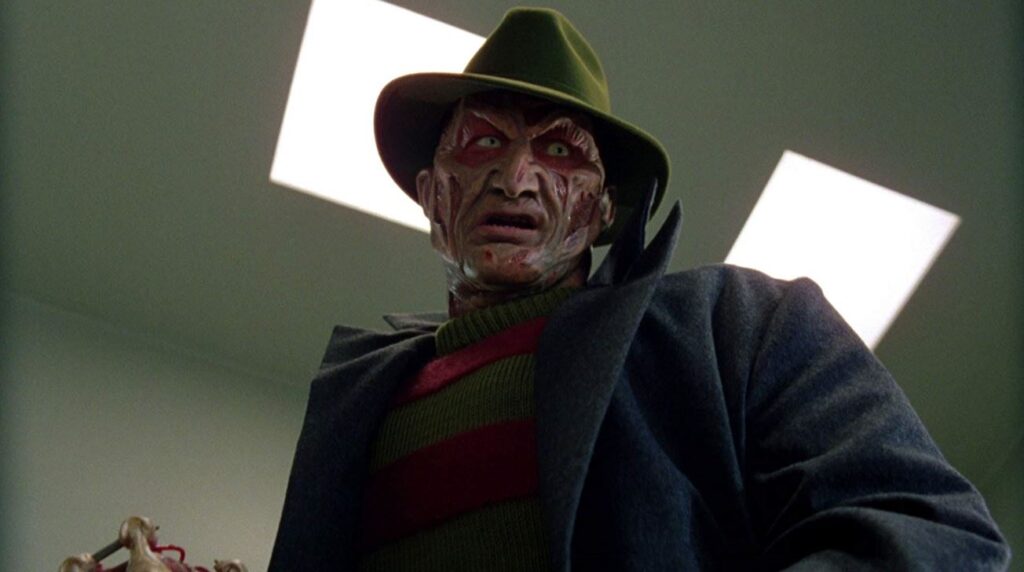
The A Nightmare on Elm Street franchise had seemingly come to an end with 1991’s Freddy’s Dead: The Final Nightmare, but the series had one more trick up its sleeve. Wes Craven had been largely absent from all things Freddy Krueger since the original film, although he did at one stage co-script 1987’s A Nightmare on Elm Street 3: Dream Warriors. A lot of behind-the-scenes elements led to some bad blood between Craven and New Line Cinema head Bob Shaye, but it was all rectified, with Craven finally getting a piece of the Nightmare financial pie. Once that was settled, Craven crafted a new idea to bring Freddy back, but in a way that was pretty ahead of its time.
Even though Wes Craven’s New Nightmare is the seventh installment of the franchise, it’s not within the same continuity of the previous films and instead presents Freddy Krueger (Robert Englund) as a fictional movie character with the actors from the Nightmare films playing exaggerated versions of themselves. Heather Langenkamp stars as herself, and she has been invited back to portray Nancy Thompson one last time for the definitive Nightmare movie. Langenkamp is hesitant to get involved because she has been experiencing menacing phone calls from a stalker, and her young son Dylan (Miko Hughes) has been behaving strangely due to circumstances that may be connected to her involvement with the franchise.
New Nightmare is a highly intelligent horror sequel that blurs the lines between fact and fiction while offering a meta-influence edge to the Nightmare IP. The movie presents interesting questions about art and whether it can be so strong that it simply can’t be contained within the pages of a screenplay. New Nightmare also served to make Freddy scary again, doing away with the quippy and comical villain who dominated the later sequels of the franchise. Despite solid reviews, New Nightmare wasn’t immensely successful upon release, likely because much of it was too ahead of its time, but it has gone on to be considered one of Craven’s best films and a standout sequel of the franchise. Craven would find more meta success with Scream in 1996, but he certainly got his feet wet with New Nightmare as he got to gain back some of the control of the monster he created.
3. Halloween 4: The Return of Michael Myers (1988)
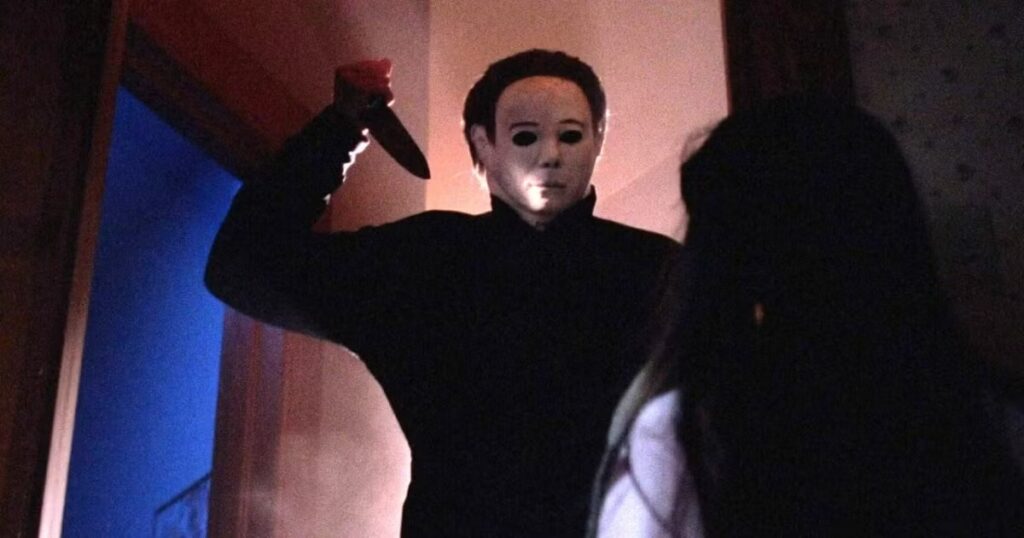
The Halloween franchise was in an interesting position following Halloween II. John Carpenter had no interest in going down the Michael Myers road again, so he convinced Universal Pictures to go in on an idea where they would release a Halloween-related film in a sort of anthology format that would feature a different story. This led to 1982’s Halloween III: Season of the Witch, which was immediately dismissed by moviegoers and ripped apart by critics. It should be noted that time has been very good to Halloween III, and it is much better than it’s given credit for, but fans wanted Michael Myers, and executive producer Moustapha Akkad was going to give the people what they wanted with Halloween 4: The Return of Michael Myers.
Directed by Dwight H. Little from a screenplay by Alan B. McElroy, Halloween 4 focuses on Michael’s return to Haddonfield a decade after the explosion at Haddonfield Memorial in the second film, which was believed to have killed both him and Dr. Sam Loomis (Donald Pleasence). As it turns out, Michael has been in a coma, and Loomis made it out with minor burns (go figure), but Michael has awakened from his long slumber, and he has now made his niece, Jamie Lloyd (Danielle Harris), the target of his next killing spree. Halloween 4 is a solid return of The Shape (portrayed by the late George P. Wilbur), and it returns the franchise to something more atmospheric as it doesn’t completely try to copy the ’80s slasher aesthetic like Halloween II did.
Sure, there are some gory moments (a thumb through the forehead, someone is impaled with a shotgun, and we see a ripped-off face), but Little’s style makes Haddonfield an eerie place again, and the movie is primarily driven by suspense and tension. This is showcased during a couple of sequences, particularly the rooftop chase and the climax, where Michael is on top of a truck relentlessly pursuing his niece and her foster sister, Rachel Carruthers (Ellie Cornell). Thanks in large part to a stellar performance from a young Danielle Harris, Jamie provides the perfect would-be-victim for Michael as she instantly engages the sympathy of the audience. Also notable is Cornell, who exudes strength and a hint of Laurie Strode’s tenacity as Rachel.
Where the movie really shines is the ending, which is a shocking moment that still manages to hold up all these years later. It’s a shame that they didn’t utilize it to its full potential in the follow-up, but, on its own, Halloween 4: The Return of Michael Myers is how you resurrect a franchise when it appeared to be dead and gone forever.
2. A Nightmare on Elm Street 3: Dream Warriors (1987)
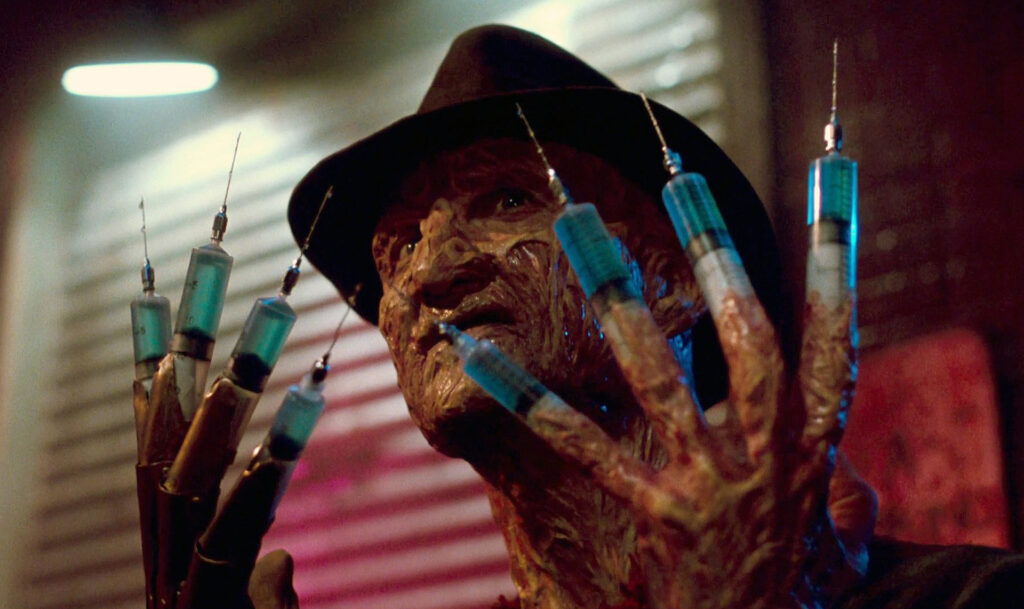
Following the release of 1984’s A Nightmare on Elm Street, New Line Cinema wanted a sequel as quickly as possible, which led to 1985’s A Nightmare on Elm Street: Freddy’s Revenge. Wes Craven had no interest in a sequel, but New Line Cinema and Bob Shaye weren’t going to let that stop them after the first movie made a considerable amount of money. The end result was a second film that actually performed a little better than its predecessor financially, but wasn’t greeted with the same critical love. While time has been good to the second film, the decision to even consult Craven on the third movie proved to be a step in the right direction.
The story for A Nightmare on Elm Street 3: Dream Warriors was developed by Craven and Bruce Wagner, while screenwriting duties fell on Frank Darabont and the director of the film, Chuck Russell. One of Craven and Wagner’s ideas was to bring back Nancy Thompson (Heather Langenkamp) and have a group of people facing off against Freddy Krueger (Robert Englund) rather than just one person. Those ideas made it into the final film, although several changes took place, leading to the final product. The film follows Kristen Parker (Patricia Arquette), who has been dreaming about Freddy and is sent to Westin Hills Psychiatric Hospital, becomes her mom believes she has become suicidal.
There she meets Nancy, who is a new intern therapist who has a connection with the man she has been dreaming about. As it turns out, several of the patients at Westin Hills have been dreaming about Freddy, and they hope to use Kristen’s skill of bringing people into her dreams, along with discovering their own dream powers, to stop Freddy once and for all. A Nightmare on Elm Street 3 feels like the sequel fans should’ve gotten after the original, as it feels more in line with what Craven created. The dreamscape is expanded upon a great deal here, and Russell does a great job of creating some awesome set pieces despite limited money (the movie had a $4.5 million budget). The characters remain the biggest selling point here as our Dream Warriors represent the best cast of the franchise, and it was also a nice touch bringing back Langenkamp’s Nancy and her father, portrayed by John Saxon. In many ways, this feels like what a legacy sequel would do today by blending the old with the new, and it’s something the movie does masterfully.
In this installment, Freddy Krueger was walking a fine line between still being creepy and becoming the pop culture magnet this film would turn him into, and that would be fully realized in the next installment, but it makes for a good blend here. As a straight Nightmare film (Wes Craven’s New Nightmare isn’t in the continuity thanks to the nature of its plot), it’s the best sequel of the bunch.
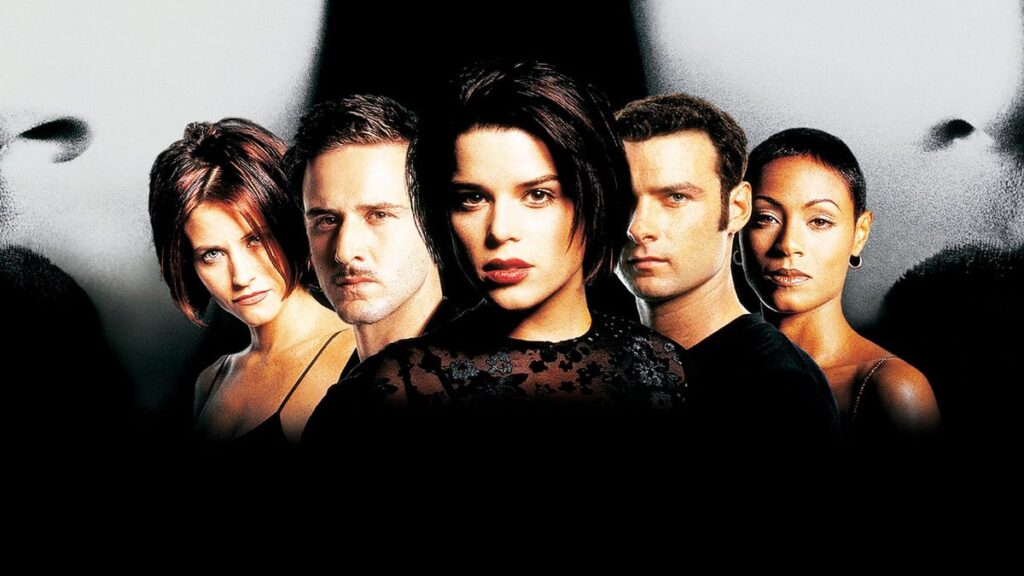
1. Scream 2 (1997)
When it was released in 1996, Scream changed the face of the horror genre during the ’90s by crafting characters that were self-aware and fans of the very genre they were inhabiting. Director Wes Craven had dabbled with some of this meta stuff with New Nightmare, but Kevin Williamson’s screenplay took things a bit further, and, after the first film’s success, it sparked a new interest in horror that had studios clamoring for their very one Scream.
As that was happening, Scream 2 was quickly rushed into development and was actually filming while Scream was steadily climbing to over $100 million at the domestic box office. Once again directed by Craven from a screenplay by Williamson, Scream 2 follows the first film’s heroine, Sidney Prescott (Neve Campbell), and other survivors of the Woodsboro massacre to Windsor College, where it appears the campus is being targeted by someone who wants to copycat the events of the first movie. In the midst of this, Gail Weathers’ (Courteney Cox) book “The Woodsboro Murders” has been turned into a movie called Stab, and with the movie entering its opening weekend, Sidney and her friends, both old and new, have to try to stay alive as they’re pursued by a new Ghostface, or two.
Scream 2 is how you do a sequel right. You can tell that all involved entered this film with the confidence of a hit under their belt, as each moment is executed with a sense of energy and undeniable style. The jokes are a bit better, the kills are a bit more elaborate, and, most importantly, the characters are given much more depth as we follow them through this new reign of terror.
Everything about Scream 2 just feels bigger, and that’s evident by everyone who wanted to be a part of it, including new additions such as Sarah Michelle Gellar, Jada Pinkett-Smith, Omar Epps, and Jerry O’Connell, to name a few. It’s a wickedly smart film as it takes down horror movie conventions with a smile on its face and does the same for sequels in equal measure. Scream 2 frequently mentions that sequels are never better than the original, but Scream 2 stands tall for this franchise, and I will die on that hill.
Black Phone 2 hits theaters nationwide this Friday.
For more on Horror, make sure to check out Fright-A-Thon.

